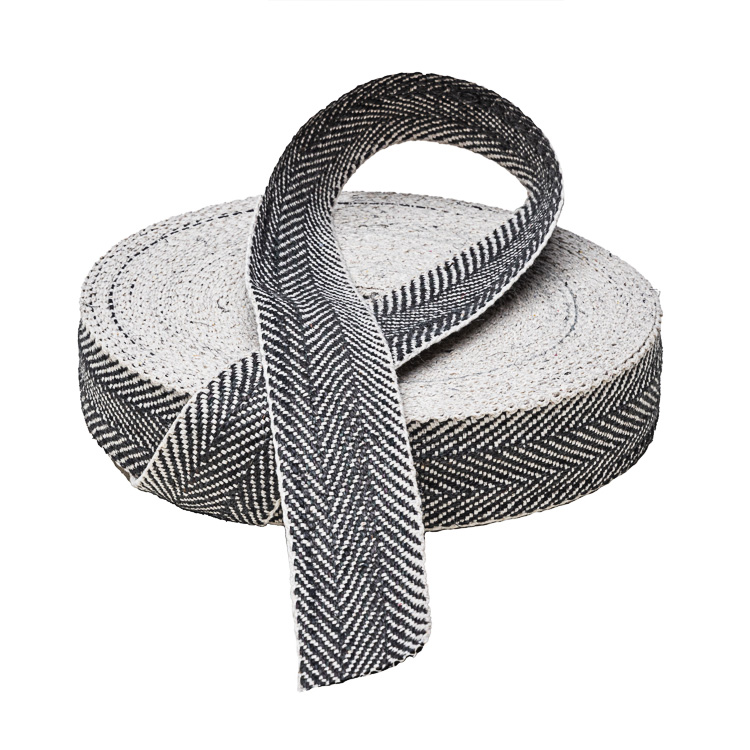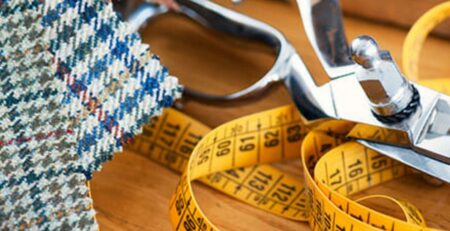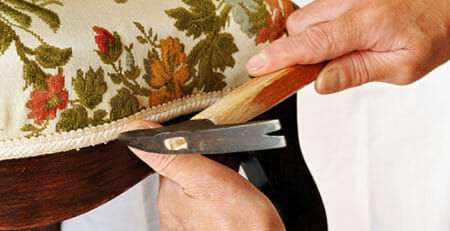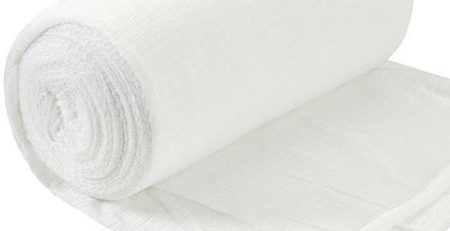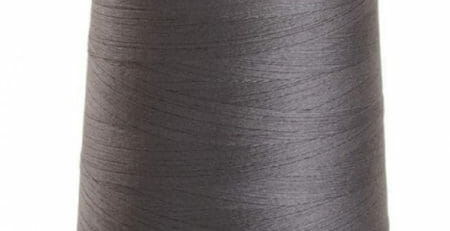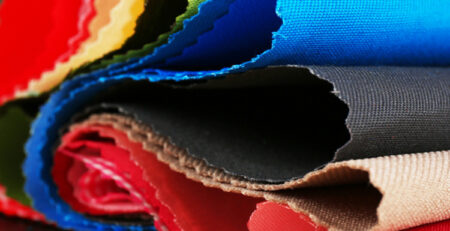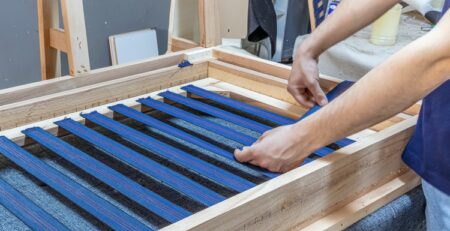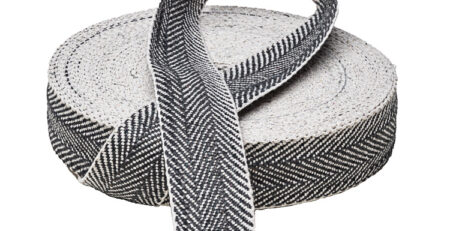How Do I Choose the Best Upholstery Webbing?
Selecting the most suitable upholstery webbing involves choosing the correct type of fabric to hold the coil springs that are on chairs or couches. Upholstery webbing gives furniture its strength, rigidity and form. There are five types that are available for upholstery: Jute English nylon, nylon and rubber. Based on the type of material, upholstery webbing is priced by the gauge length, width, stretch and the number of strands. In order to select the ideal fabric for upholstery, the first thing to consider is the type of furniture that will need to be upholstered. Because various types of webbing work best for specific furniture pieces or for particular reasons.
Jute, which is made out of plant fibers. It is the earliest and the most commonly used kind of webbing for upholstery. The highest quality jute is available in a roll that is marked by the red stripe. A stripe of black on jute indicates that the material is lower quality.
Jute of high-quality and heavyweight is used to give support to the part of furniture that must support the largest weight load such as the seat. A lesser-quality jute can be a suitable option in the back. Jute webbing, as opposed to modern webbing is the sole type that can be used for a traditional piece of furniture. Durable and sturdy, its one drawback is that the fibers are susceptible to rotting as time passes. This is why jute shouldn’t be used for upholstery of outdoor furniture.
Jute gauges are weighed in accordance with colonial British measurements. For example, a piece of 9 pounds (4.1-kg) is 9 pounds for 144 yards (131.7 meters). This jute-like gauge is suitable for the arms and back of a chair, however in a chair that has to hold the load of two or three individuals, the majority of upholsterers recommend that you use a minimum of 11 pounds (5-kg) webbing of jute.
English webbing also referred to as black-and white webbing is weaved in herringbone patterns. It is the best quality webbing that is an ideal alternative to jute for upholstery antique and fine furniture. The most durable English webbing is made entirely from flax. Lower-quality levels have a portion of hemp, cotton or linen, but are not as sturdy. English webbing typically comes in sizes that are 2 inches (5.1 cm) and weighs about 11 pounds (5 kg) per gross.
Man-made webbing is usually utilized for contemporary and low-cost chairs and couches. Although nylon webbing is less thick than Jute webbing, both are able to provide coil springs with the same amount of support, especially when sitting. In between it is nylon that is the best choice for upholstery of contemporary or outdoor furnishings. Like jute the nylon upholstery is exactly the identical, and therefore it is not sold in weight. Webbing made of polyester can also be utilized in lieu of nylon or jute however, since it’s an newest product to the market for upholstery however, it is used much less often.
Webbing made of rubber can be used in conjunction with coil springs. Webbing that is elasticized is cheaper to utilize than springs and provides greater flexibility in the design of frames. Contrary to the furniture produced by the United States, most European and Scandinavian furniture is made with suspension systems using rubber webbing.
There are numerous advantages of using the use of rubber upholstery webbing. As a suspension system it is a great alternative to traditional hardware, gives an extremely solid foundation for support and minimizes the noise generated by coil springs. The price of rubber webbing is based on to the stretch and number of strands. This is based on the degree of bounce or firmness you want in a sofa or chair.
Traditional furniture has webbing is usually connected to the edges pieces. Modern furniture made using staples and tacks typically isn’t strong enough to keep the webbing position. To correct this issue webbing must be affixed to the sides and not the edges of the pieces which are being replaced.
Traditional webbing materials, such as Jute or English webbing shouldn’t be used on modern sofas and chairs, the same as it is not appropriate to apply synthetic webbing to furniture made of antique or fine materials. If you are unsure, the majority of upholstery experts would suggest replacing the furniture. Throwing an upholstery tool on the top of a web is the most reliable test for upholstery webbing. The best webbing will be tossed right back.


